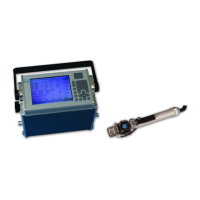Brief Introduction to Chlorophyll Fluorescence
CIRAS-2 Operator's Manual Version 2.04
- 124 -
2. Quantum Efficiency of Photosystem II
Modulated instruments allow measurement of fluorescence from samples whilst
photosynthesis is operating under actinic light conditions. The most common aim is to
estimate the proportion of energy quenched by photosynthetic and non-
photosynthetic (e.g. heat emission) processes and thus estimate how efficiently light
is used by PSII.
Several different protocols have been produced using actinic and saturating light
sources to manipulate the sample. The most common (Genty technique) and its
associated parameters is discussed in the parameters glossary. Measurement of the full
range of light-adapted fluorescence parameters requires the following instrumentation
features:
Capable of delivering at least 2,500 µmol m
-2
s
-1
to the
leaf to fully reduce all PSII electron transport
acceptors.
To drive photosynthesis in the sample. Ideally this
should deliver at least 2,000 µmol m
-2
s
-1
to the sample
to simulate maximum summer conditions.
To preferentially over-excite PSI relative to PSII.
Good Signal / Noise Ratio
To allow remote measurements at some distance from
the sample and therefore allow simultaneous
measurement with other techniques such as infra-red
gas analysis.
The relatively slow changes in fluorescence events when measuring common light-
adapted parameters means that the high-time resolution of fluorescence induction
kinetics is not needed.

